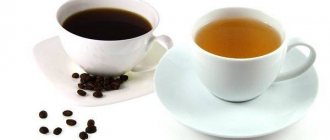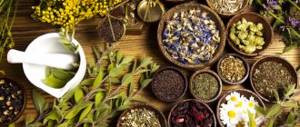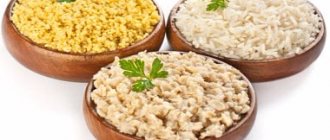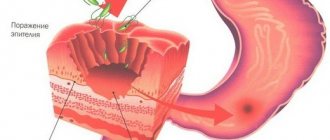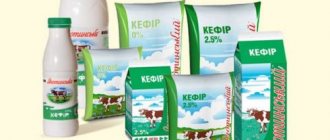Gastric ulcer requires a serious approach to the patient’s diet. The list of permitted products is determined by a specialist who draws up a therapeutic nutrition program for an ulcer patient.
Vegetables and fruits are of particular importance in the diet, because they are rich in micronutrients and vitamin components. But not all products from this group are allowed for patients with peptic ulcers.
What fruits and vegetables can you eat if you have a stomach ulcer?
The consumption of fruits and vegetables is of great importance in antiulcer diet therapy. Almost all experts recommend eating according to the treatment program for peptic ulcers.
If it is undesirable to consume all kinds of chocolates and sweets, then eating fruits and vegetables is very healthy. This alternative to sweets will help supply the body with essential microelements and vitamins.
If you have an ulcer, you can eat sweet, ripe fruits or dried fruits, and non-acidic vegetables. It is necessary to exclude any food that can irritate the mucous membranes of the gastric organ and provoke excessive production of hydrochloric acid secretion.
Vegetables
We should not forget that vegetables have positive and negative sides for sick people.
Among the vegetables that you can eat, doctors highlight the following:
- Potato.
- Salad.
- Pumpkin.
- Carrot.
- Fresh cucumber.
- Zucchini.
carrots zucchini pumpkin potatoes
For duodenal ulcers, cucumber, pumpkin, and beets are used for prevention. These vegetables relieve symptoms of pain, inflammation and envelop the walls.
It is forbidden:
- Hot and sweet peppers.
- Tomatoes.
- Green pea.
- Spinach.
- Greenery.
- Canned vegetables.
Bananas
These fruits can be consumed for any gastrointestinal pathology, because they are safe for the digestive system. Bananas provide an anti-inflammatory effect on mucous tissues, soften the course of bacterial and viral infectious pathologies.
People with ulcers can eat both green and ripe bananas, after eating which they feel full. Eating these fruits can completely replace a snack.
They contain leukocyanidin, which helps thicken the mucous membranes of the gastrointestinal tract, thereby creating additional protection for the digestive system.
Persimmon
Persimmon contains organic acids. There are few of them, but in case of ulcerative pathology they can harm the stomach. The fruit also contains coarse fibers, which are also not beneficial for peptic ulcers.
If you eat tart fruit for people with ulcers, you can provoke a relapse of the pathology.
In rare cases, when a peptic ulcer is in long-term remission, you can eat no more than one fruit, but it must be ripe, dark, and free of rot. Such persimmons have a sweeter taste and their fibers are much softer, which is not so dangerous for the affected gastric organ.
What is contraindicated for gastrointestinal problems
People with ulcers should absolutely not eat fruits that are highly acidic and can cause fermentation.
You must refuse to take:
- Citrus. However, in this case, you can use a trick and dilute citrus juice with honey and olive oil and take 1 tablespoon daily.
- Grenade. But you can take tea from the peels of the fruit.
- Persikov.
- Kiwi.
- Melons, because this is a controversial product. On the one hand, you can’t eat it, since even for a healthy body it’s heavy food and you can’t take melon on an empty stomach, just like watermelon. It increases acidity, provokes the production of hydrochloric acid, which corrodes the walls of the hollow organ. On the other hand, melon has a beneficial effect on the nervous system, which is also important for internal organs, especially since this disease worsens during periods of stress and anxiety. Melon in limited quantities as a second course can be eaten with normal and low acidity.
Pumpkin
Pumpkin is useful for peptic ulcers. It has a laxative effect, relieving patients of constipation and other dyspeptic disorders.
Pumpkin pulp also has an alkalizing effect on gastric secretions, reducing inflammation and accelerating the healing of ulcers. The culture is rich in iron, so its use is useful for low hemoglobin.
- You need to introduce pumpkin into the diet of an ulcer patient slowly.
- Fresh pulp is eaten at 20 g per day, gradually increasing the norm to 150 g before eating the main meal.
- The full course lasts 10-60 days, then a break and repeat the course again.
- If the pulp is unpleasant to eat, then freshly squeezed juice is prepared from the pumpkin, which is drunk ½ cup 2 times a day.
- You can add a little honey to the drink to enhance its taste and healing qualities.
Due to its alkalizing effect, pumpkin should be eaten with caution at low acidity.
Signs of peptic ulcer
Signs of a stomach ulcer
Understanding the main symptoms of a developing disease will allow you to promptly refer to a specialist and recognize the disease, which ensures successful treatment without surgical intervention. But sometimes it happens that peptic ulcer disease at the development stage does not express itself at all. Therefore, for timely identification of ailments, systematic checks are recommended. Asymptomatic ulcers are observed in 28% of episodes, and are noticed after the death of the patient.
Suspicion should arise if a number of symptoms are present:
- Pain is present in the upper abdomen. This symptom is detected in 75% of cases, and 25% have complaints of low-level pain. The remaining 50% have more severe pain, which increases significantly with physical activity, after drinking alcohol or spicy food. Also, if pain is present during long intervals between meals, you should “sound the alarm.”
- Heartburn. Manifests itself in a burning sensation in the stomach. As a rule, it appears due to the fact that the acidic environment penetrates the lumen of the esophagus, while acting as an irritant. This symptom is observed in 80% of patients. The symptom occurs several hours after eating.
- Nausea, sometimes accompanied by vomiting. This symptom usually begins due to a direct disorder of gastric motility. In the presence of an ulcer, vomiting is observed 2 hours after eating, and as the stomach empties, a feeling of relief occurs. It is this feeling that pushes patients to induce vomiting on their own.
- Loss of appetite. This kind of sign is formed at the psychological level.
- Belching is usually accompanied by an uncontrollable release of gastric juice into the oral cavity.
- Increased gas formation.
- There is a premonition of heaviness in the abdominal area that occurs after eating.
- The feeling of saturation comes extremely quickly.
- Abnormal stool. As a rule, constipation is observed with a stomach ulcer.
Among the external symptoms of the presence of a stomach ulcer, you should know the signs that can be seen with the naked eye. These signs include:
- Gray coating on the tongue.
- Increased sweating.
Beet
The therapeutic nutrition program for peptic ulcer disease is considered the basis of the therapeutic process. Beets are considered a common product in the diet of ulcer sufferers, but during an exacerbation they should not be eaten.
The greatest benefits are found in beetroot juice, to which honey is added for taste. You can mix it in equal parts with carrot juice and take this drink before meals.
Fruits with high acidity
If the previous list of permitted products contains a large variety, then in case of gastritis with high acidity, stomach ulcers and other epigastric diseases, the issue of choice should be approached more carefully. In such conditions, the fruit should be ripe, soft and not sour, since it is impossible to increase the level of hydrochloric acid, as this will lead to an exacerbation of gastritis and ulcers.
Also, the fruits should not have seeds or peels, which can harm the irritated gastric mucosa, which requires a gentle diet during an exacerbation. The best option is to consume fruits in crushed, puree form. Below is the TOP products that are allowed for consumption with high acidity.
Banana
The most commonly consumed fruit for gastritis. Its beneficial properties include its enveloping function, which allows you to quickly soothe the irritated epigastrium, promoting tissue regeneration. In such a protected state, the stomach and intestines can more easily cope with traditional drug treatment.
Bananas are consumed raw and baked, and they can also be added to ready-made products - porridge, non-sour cottage cheese. Thus, banana can be eaten for stomach and duodenal ulcers.
Persimmon
The sweet, bright fruit is perfectly digestible for gastritis. Given its astringent properties, it can help in scarring ulcers and erosions.
Persimmons are consumed fresh, in small portions. The fruit can be eaten if you have a stomach ulcer.
Pear
Pear fruits are also approved for use for gastritis with high acidity. Ripe and soft fruits are peeled and seeded and divided into several portions. To prevent flatulence, it is not recommended to eat more than 100 g of pear at a time. Just one or two pieces a day will be enough.
The beneficial properties of pear lie in its ability to gently cleanse the walls of the stomach and intestines of waste and toxins. It plays a significant role in eliminating the bacterium Helicobacter pylori, the culprit of most gastritis.
Pear is recommended for gastritis with high and low acidity.
Apples
When choosing these fruits, a patient with gastritis should focus only on ripe, soft and sweet types.
It is not advisable to eat them raw due to high acidity, but baking them separately or with cottage cheese is safe, tasty and healthy.
Try to be sure to stick to the measure - 1-2 fruits per day.
Watermelon
It is not for nothing that the tasty and healthy berry is considered permitted during gastritis. Possessing alkalizing properties, it is able to cope with high levels of hydrochloric acid, diluting it with its ripe pulp. Watermelon is perfectly absorbed by the stomach, and its diuretic and cleansing properties will only speed up the healing process.
However, you should carefully monitor the volume of the portion eaten; excess liquid can subject the stomach walls to stretching, which is not desirable for any form of gastritis.
Before introducing watermelon into your diet for gastritis, be sure to consult not only a gastroenterologist, but also a nephrologist.
Avocado
A new product in the diet for gastritis, which is absolutely free of any plant acid. Avocado, like other alkaline fruits for ulcers, is very useful for elevated levels of hydrochloric acid.
Containing a large amount of oils (polyunsaturated), avocado heals damaged erosive mucous membranes, promotes its regeneration and restoration.
You can eat avocado with any permitted products, but you should choose ripe and soft fruits, dividing them into small pieces.
Potato
Potato tubers are rich in vitamins and micronutrients. Fried potatoes are contraindicated for people with ulcers, but the vegetable can be eaten boiled or steamed. Starch has an enveloping effect on the mucous membranes, eliminates inflammation and spasms.
Drinking potato juice is very beneficial for the stomach. You need to take the drink before meals about half an hour, 3 times a day. But you should definitely take into account that after six months of storing the vegetable, solanine begins to be released in the tubers.
Therefore, it is better to treat yourself with potato juice in the fall or winter. This drink should be drunk through a cocktail straw, as it is harmful to tooth enamel.
Prohibited
If you have a peptic ulcer, it is very important to stop eating prohibited foods, otherwise the pathology will only get worse. Even during the remission period, they must be excluded from the diet.
Such products include radishes, onions and garlic, peas, beans and horseradish, mushrooms and hot peppers. These products take a long time to digest, they irritate the mucous membranes, which provokes increased pain symptoms and exacerbation of ulcerative pathology.
Pomegranate
Pomegranate is incredibly beneficial for the body, however, if you have a peptic ulcer, you need to treat it with special caution. Pomegranate has an antiseptic effect and is rich in vitamins, so it is used in the treatment of many pathologies.
To avoid irritation of the gastric mucosa, it is necessary to treat ulcers with pomegranate using dried fruit crusts.
- A water infusion is prepared from them.
- About 7 g of dried crusts are brewed with 150 ml of boiled water and covered with a lid for infusion for half an hour.
- Then the infusion is drunk in 4 doses, the first dose should be taken on an empty stomach, and the last one before going to bed.
You should take an infusion of pomegranate peels every other day for a week. If necessary, the course of therapy is repeated.
Lemon and other citrus fruits
Gastroenterologists categorically prohibit citrus fruits for peptic ulcers, because they increase acidity. But you can bypass this ban in order to get the antibacterial effect from lemons. To do this, the juice of 2 lemons is mixed with ½ kg of honey and ½ liter of olive oil.
Mix all components until smooth and take the resulting product one large spoon before meals three times a day. Otherwise, people with ulcers should not eat oranges, lemons, tangerines and other citrus fruits.
Kiwi
Kiwi fruits have high acidity, so it is unsafe to consume them in case of ulcerative pathologies. Eating kiwi is fraught with surges in stomach acidity and the development of fermentation in the gastrointestinal tract, which is unacceptable for peptic ulcers.
Peach
Peaches are contraindicated for gastric ulcers for the same reason as kiwi - they cause serious fermentation and increased acidity in the gastrointestinal structures. But with long-term remission, eating a small amount of peaches is allowed.
Just be sure to choose ripe fruits and remove the skins from them before eating. You can also eat peaches baked, but only a little at a time.
Melon
A fruit such as melon is considered a very heavy food for the digestive system, so you should be careful when consuming melon for ulcerative pathology. Melon perfectly cleanses the intestines, has a pronounced diuretic effect, and helps with sclerosis. But if you have an ulcer, it is not recommended to eat it.
The reasons for the ban are associated with the high irritant effect of melon on the gastric mucous membranes, as a result of which heartburn and pain occur in ulcer sufferers. Moreover, in large quantities, melon provokes colic in the intestines. Therefore, it is better to stop using it.
If you follow the dietary recommendations of gastroenterologists and follow a therapeutic diet, then in a fairly short time you can achieve complete healing of the ulcerative lesion.
By correctly adjusting the diet, patients help the gastrointestinal tract recover faster, and in the future protect themselves from exacerbation of ulcerative pathology. Only with this approach can you completely cope with an illness such as an ulcer.
What not to do
Fruits contain many weak organic acids - malic, citric, grape. They add a pleasant sourness and allow products to remain fresh longer. On the other hand, they negatively affect the condition of patients with duodenal and gastric ulcers. Hence the simplest conclusion - patients should not eat sour fruits.
Prohibited:
- Sour apples.
- Citrus fruits (all, even sweet oranges).
- Kiwi (their juice is very pungent).
- Pineapples.
- Peaches and apricots.
- Grape.
- Melon.
You will have to stop eating citrus fruits
These foods may taste sweet, but their organic acid content is hazardous to health. Sometimes, with stable remission, the patient can treat himself to a slice of melon or mango, but this can only be done once every few months and always on a full stomach. In this case, food acts as a natural antacid, reducing the danger. Regarding lemons and oranges, the restrictions are more stringent - it is advisable to completely avoid them.
In some cases, deviations from the diet are acceptable - if the patient feels well and the “forbidden” fruits are prepared. For example, you can allow kiwi without peel or baked dish, sprinkled with lemon juice. But such manipulations are risky - even a small piece can make you feel worse. Culinary experiments are permissible if remission lasts more than a year, and the attending physician has allowed to expand the diet. At the same time, you need to carefully monitor your well-being - you cannot tolerate it if you become ill, it can be dangerous.
Fruits are rarely cooked, but it’s worth saying a few words about it:
- Consumption of fresh fruits and salads with prohibited list products is prohibited.
- As part of baked dishes (poultry with sour apples, lemon slices, etc.) - acceptable in small quantities for stable remission.
During remission, fruits can be consumed as part of meals
- Compote, jam and jelly are excluded.
- Consumption of dried “forbidden” fruits is not recommended.
- Even permitted products are excluded from fried and smoked dishes (barbecue marinades, etc.).
